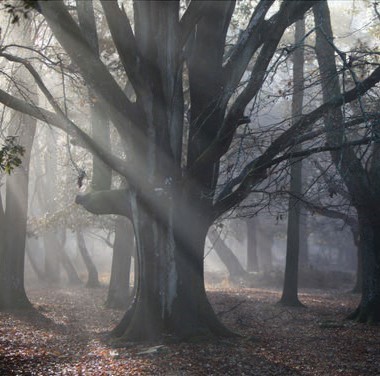A – A-Z of Commoning and the New Forest
Ants
There are about fifty types of ant in the UK, and more than half can be found in the New Forest.
The Southern Wood Ant creates huge nests among the trees in the Forest, made out of pine needles, leaves and twigs. The nests can be a metre or two across. Be careful not to get too close, as the ants spray formic acid when they feel threatened, and they can bite.
The New Forest is also home to the rare Bog Ant which spends its life in and around some of the Forest bogs.
Adjacent Common
See ‘Crown Land and Adjacent Commons’
Ancient and Ornamental areas
or A&O areas, are parts of the Forest that contain particularly old and impressive trees.  There are special rules for how the A&O areas are managed.
There are special rules for how the A&O areas are managed.
Some of the trees in the A&O areas are ‘pollards’, which means that their trunks were once cut across at about head height. Pollarding makes lots of new branches grow where the trunk is cut, and also makes the trunk grow very thick.
If you see a pollard oak it must be well over 300 years old, because pollarding oaks in the New Forest was banned in 1698 by Parliament. The New Forest was an important source of wood for building ships for the navy, and pollarding was causing a shortage of long timbers.
Agisters
 Agisters are the officials who look after the ponies, cows, pigs, sheep and donkeys that live on the Forest. The name comes from the word ‘agist’ which means to charge for letting animals graze your land.
Agisters are the officials who look after the ponies, cows, pigs, sheep and donkeys that live on the Forest. The name comes from the word ‘agist’ which means to charge for letting animals graze your land.
Agisters spend much of their time on horseback. Today they use mobile phones, but fifty years ago they had to send post-cards to keep in touch!
Each Agister has a ‘beat’ in the Forest. You should get to know your local Agister, and call him if you see a sick or injured animal on the Forest. The Agisters work for the Verderers (see V), and their phone numbers are available on the Verderers website.

